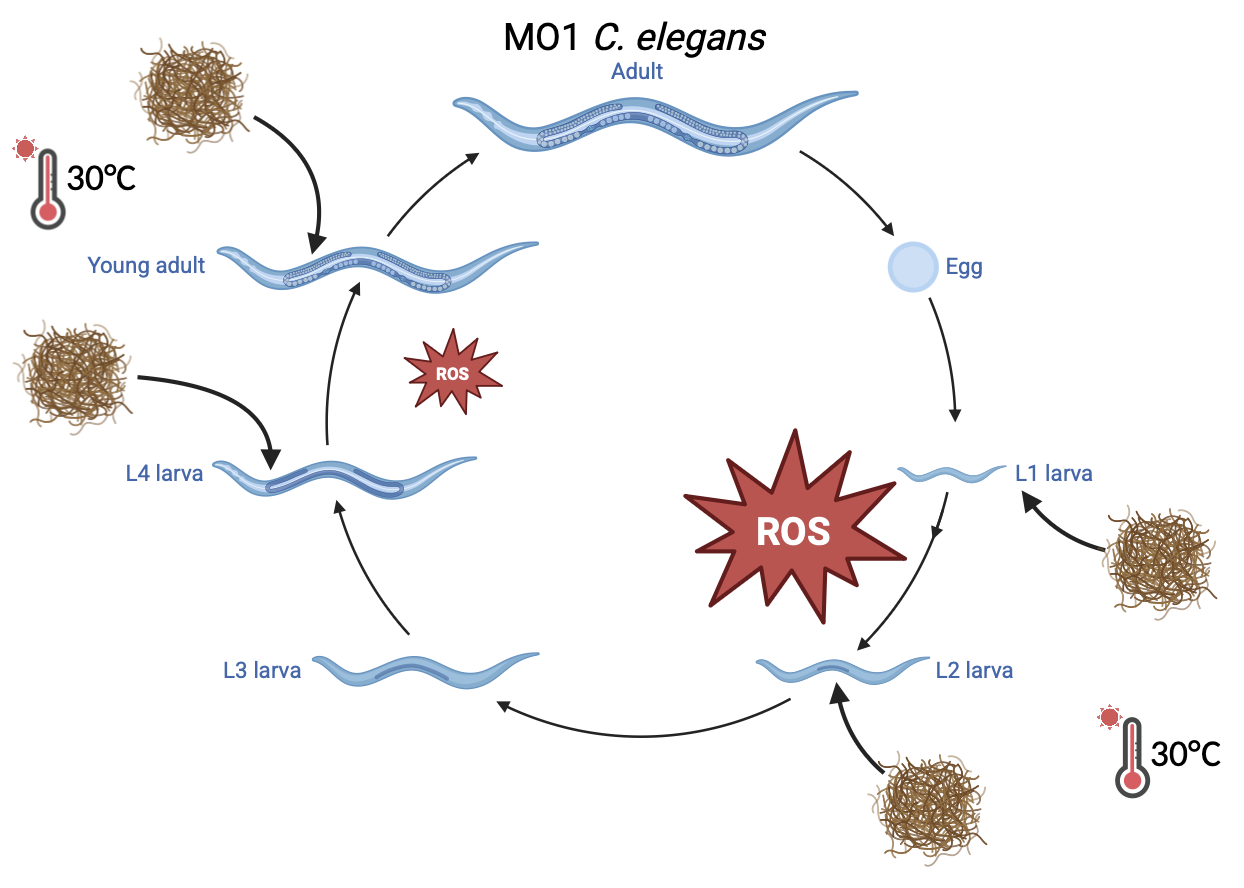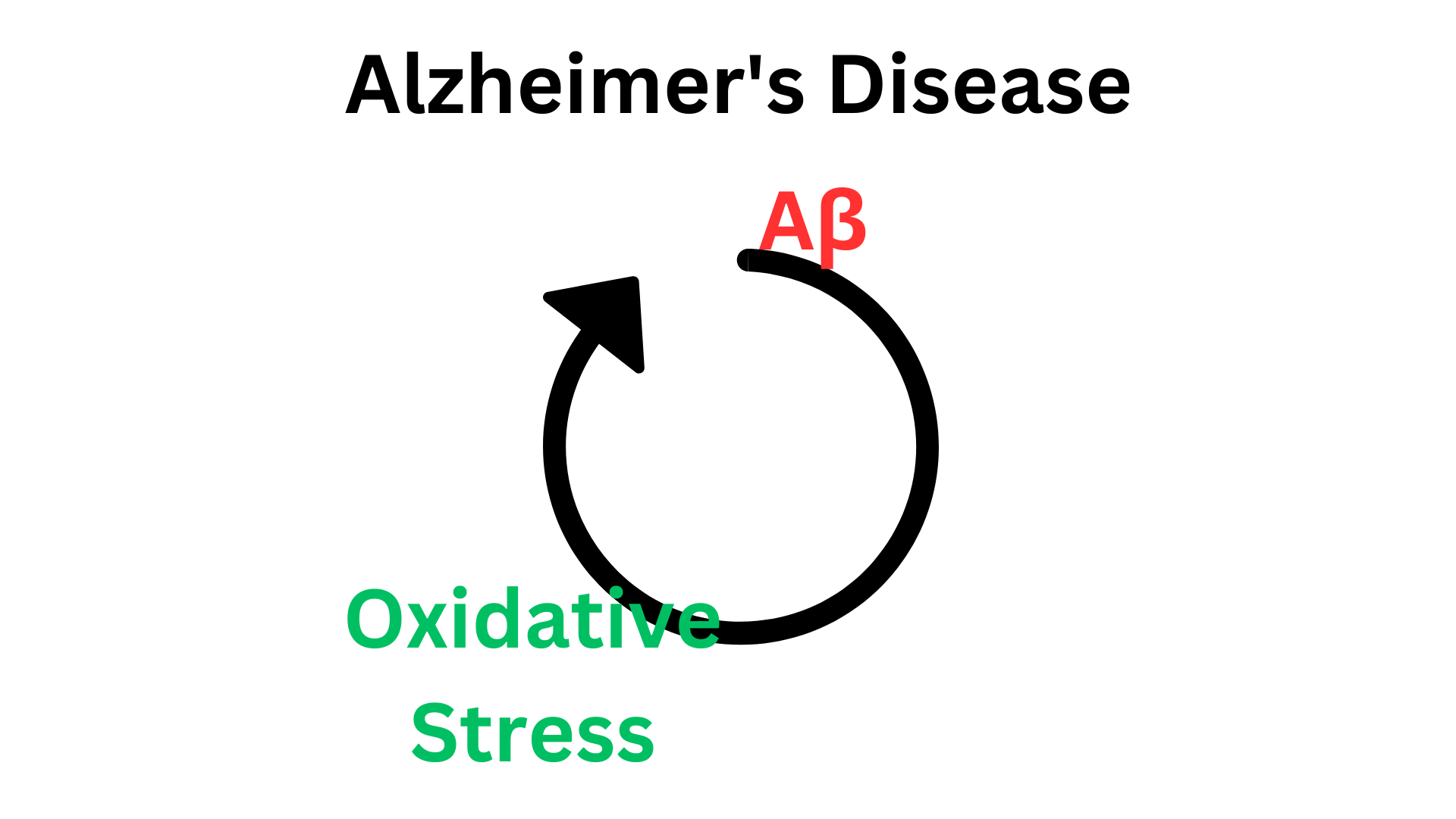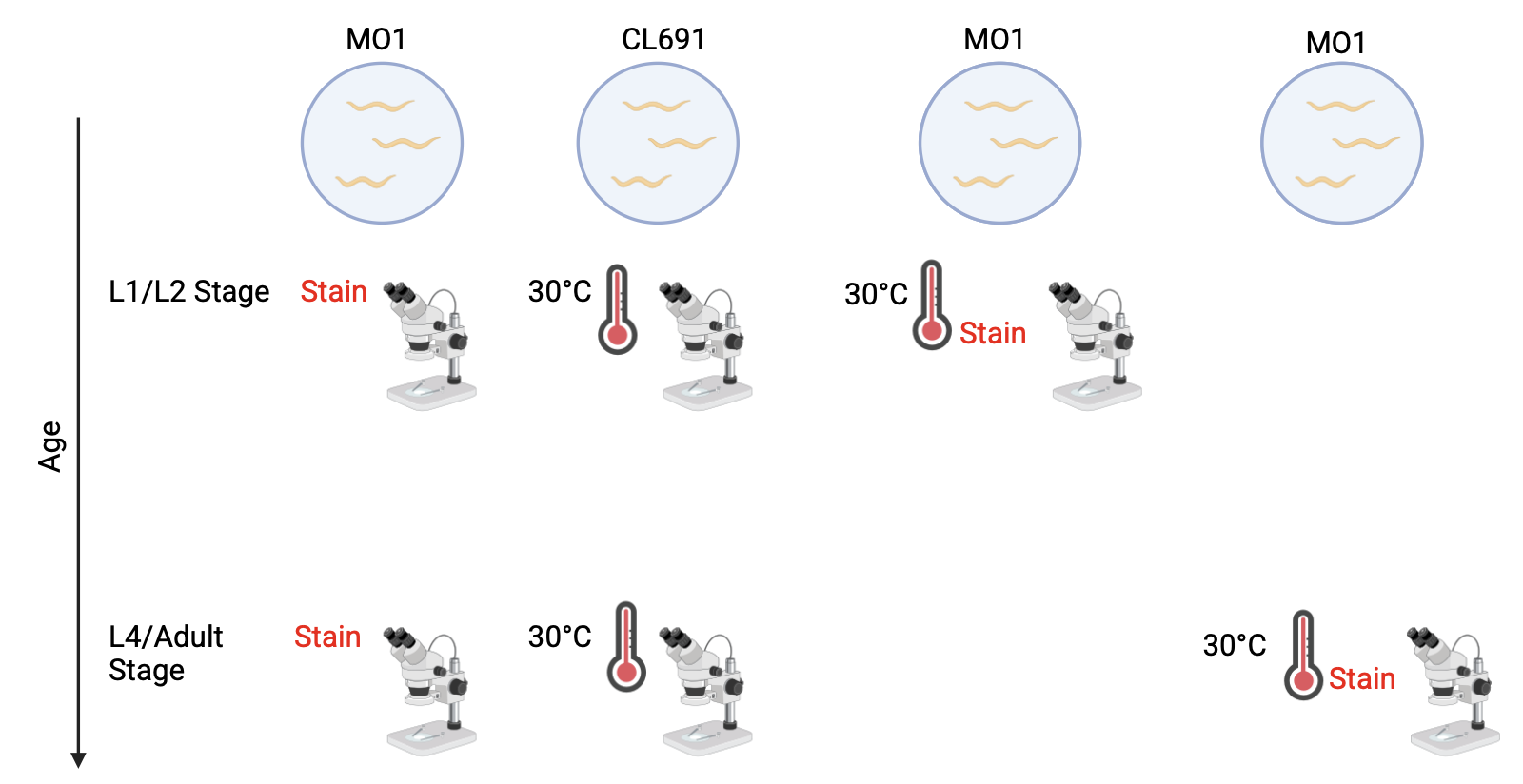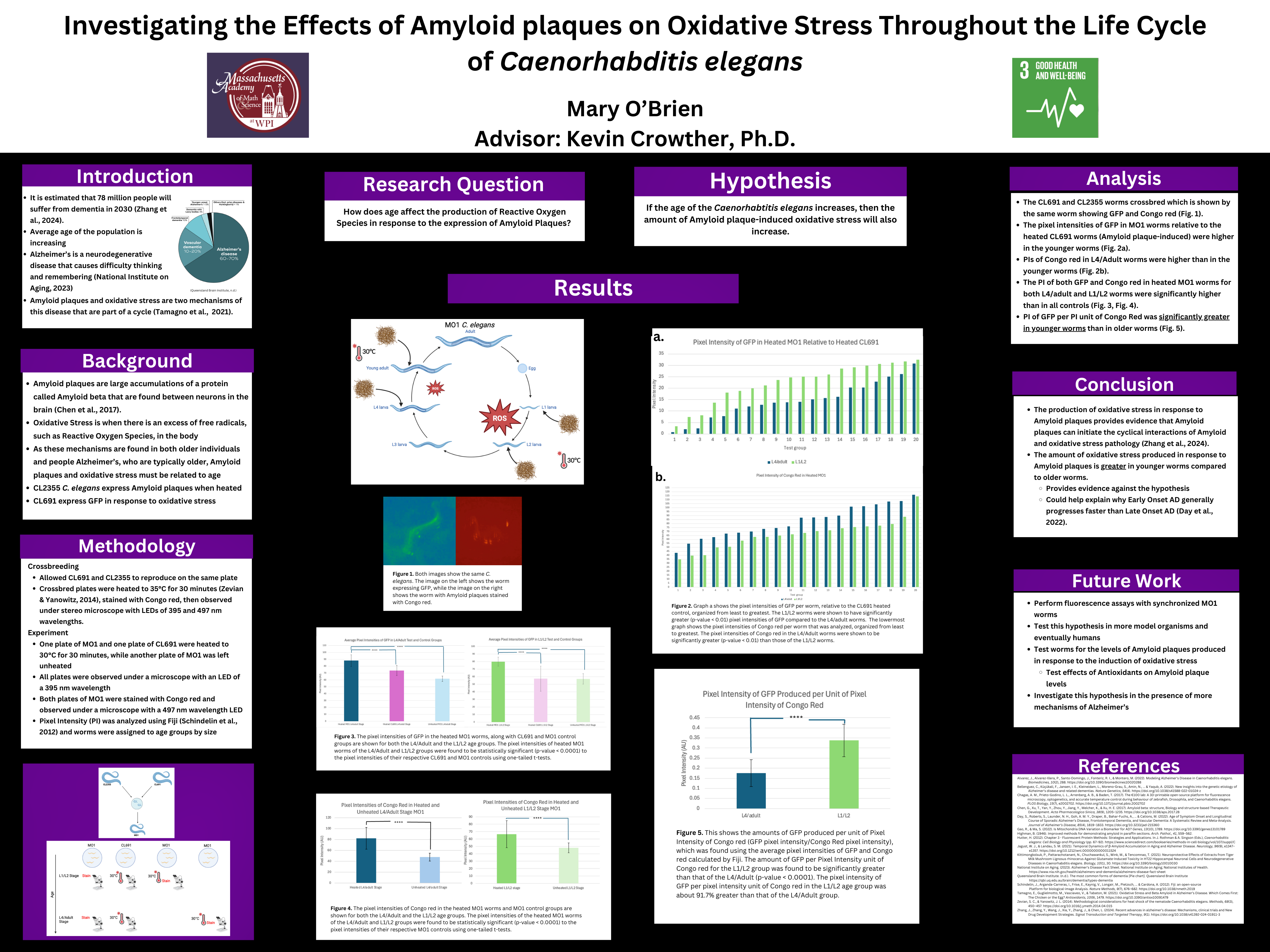Abstract
The prevalence of Alzheimer’s Disease (AD) is increasing, along with the average age of the population. There is no cure for AD due to a lack of knowledge on the underlying pathology of the disease. Amyloid plaques and oxidative stress are especially puzzling because there is conflicting evidence on which one appears first, and they both cause an increase in the amount of the other. Both Amyloid plaques and oxidative stress are found in both healthy and Alzheimer’s patients, which allows this research to also apply to the processes of general aging. In order to learn more about the mechanisms associated with the cognitive decline of Alzheimer's patients, we used Caenorhabditis elegans to test the effects of aging on the amounts of Amyloid plaque-induced oxidative stress. MO1, a novel strain of transgenic C. elegans, which continuously expresses GFP as a reporter for oxidative stress and expresses Amyloid beta when warmed was used. Amyloid plaques were induced at different stages in the life cycle of the worms, then the worms were dyed with Congo red to ensure the expression of amyloid plaques. We found that as the age of the C. elegans increases, the levels of ROS produced in response to amyloid plaques will decrease. This research will give us further insight on the pathology of Amyloid plaques and oxidative stress in Alzheimer’s, as well as in the process of aging. This relationship helps to explain the age-dependency and pathology of Alzheimer’s.
Keywords: Alzheimer’s Disease, Amyloid plaques, oxidative stress, Reactive Oxygen Species, aging







